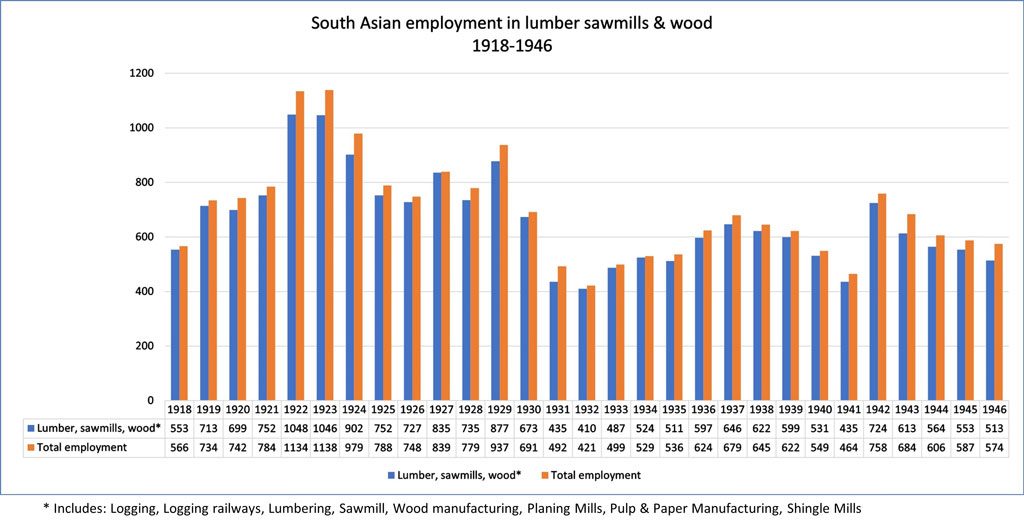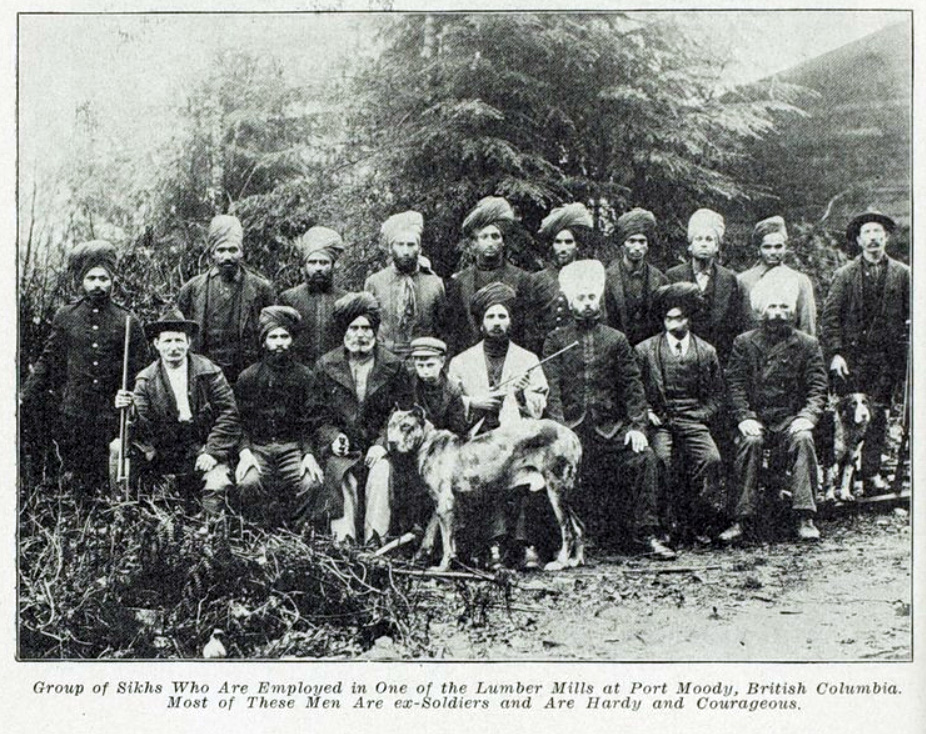Soon after Vancouver Island and British Columbia became colonies of Britain, capitalists set about to extract as much profit as possible from the province’s resources. BC had abundant timber and markets were hungry for its wood. [1] The arrival of South Asians coincided with the rapid expansion of the forest industry.
New arrivals needed to find work and the tough, dirty and dangerous forest industry welcomed them as “unskilled” labourers. Speaking little to no English and desperate for income, they were vulnerable to exploitation.
Sawmills and other forest-related industries were by far the largest source of wage labour for South Asian workers well into the 20th century.


- Mickleburgh, On the Line, 5. ↵
